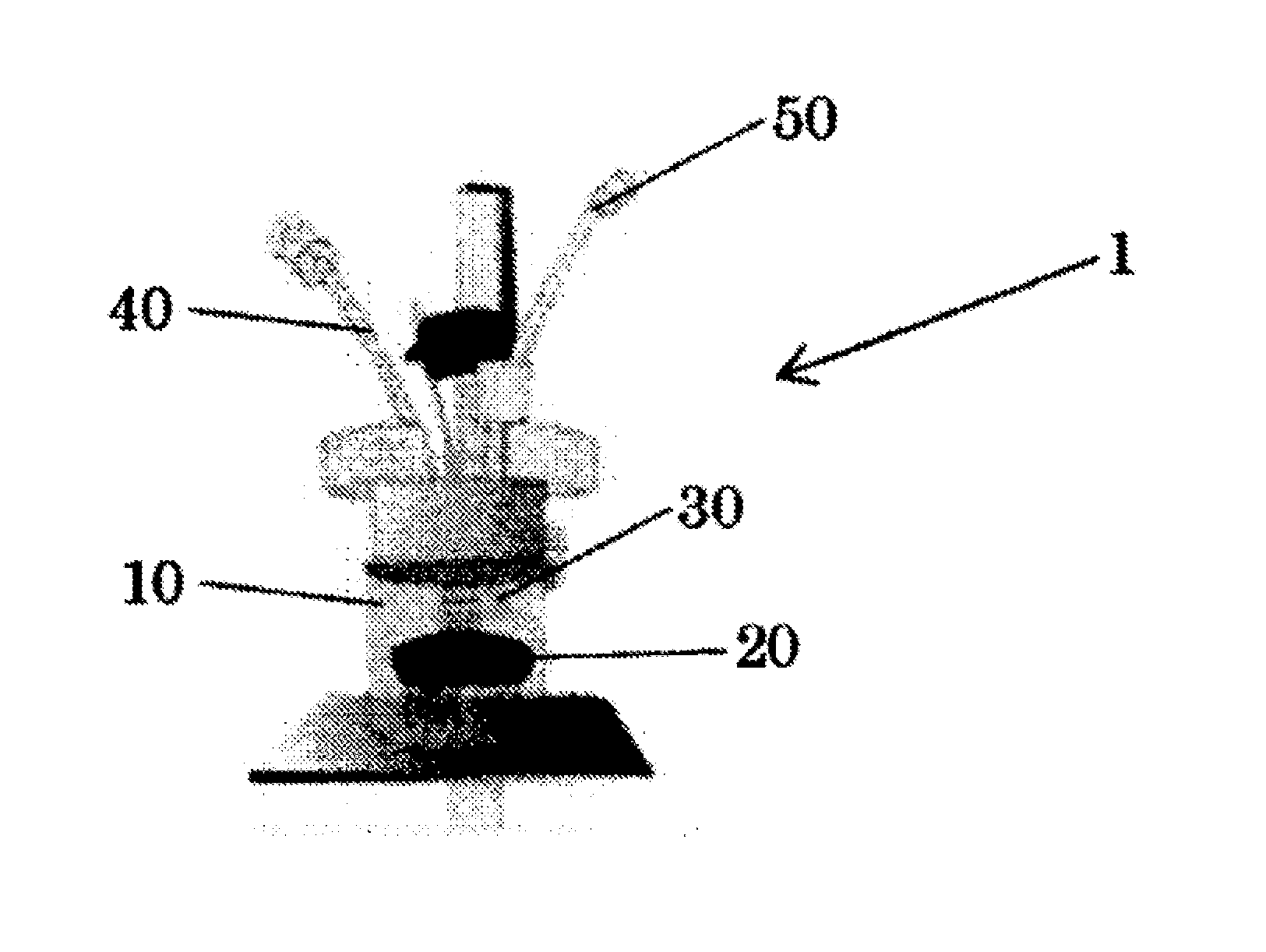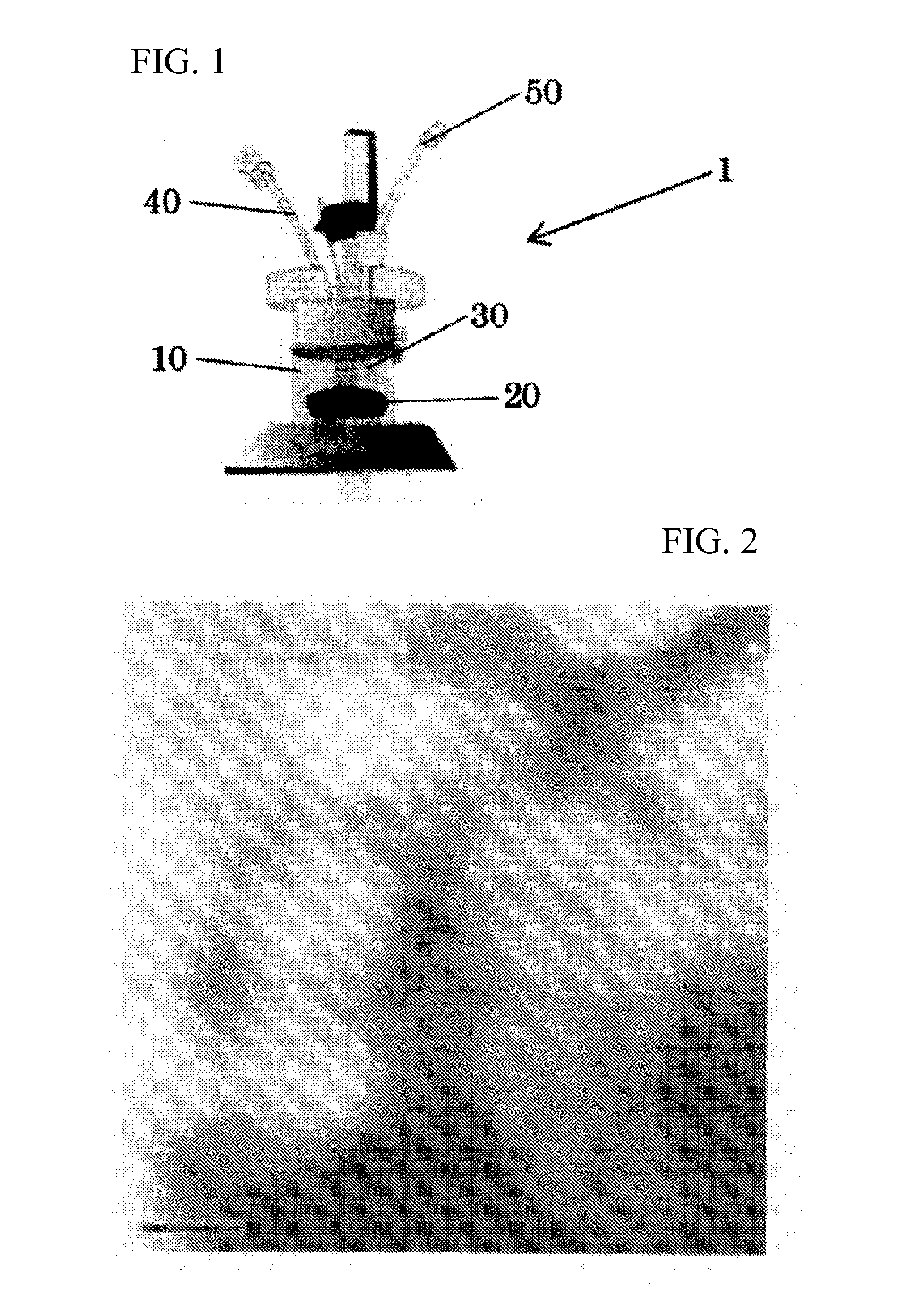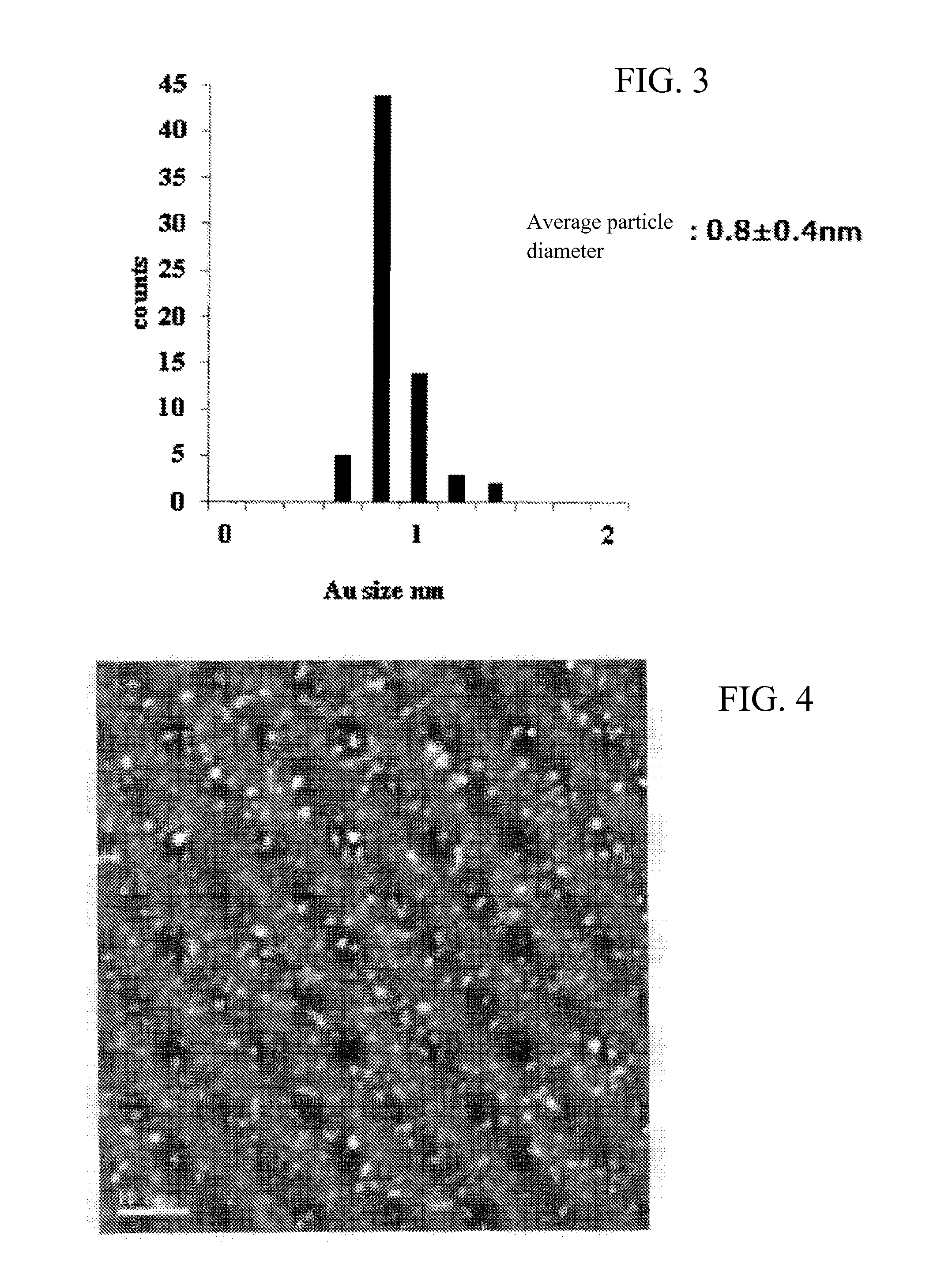Gold cluster catalyst and method for producing same
a catalyst and gold technology, applied in the field of gold cluster catalysts, can solve the problems of insufficient selectivity control of reactions and inability to provide desired substances with high reactivity, and achieve the effect of high selectivity
- Summary
- Abstract
- Description
- Claims
- Application Information
AI Technical Summary
Benefits of technology
Problems solved by technology
Method used
Image
Examples
example 1
Preparation of Gold Cluster Catalyst Having the Number of Gold Atoms of 11
(Synthesis of chloro(triphenylphosphine)Au (I))
[0104]Chloroauric acid tetrahydrate (1 g) was dissolved in 35 mL of ethanol in a nitrogen atmosphere while stirring to give a chloroauric acid solution. To the chloroauric acid solution, 50 ml of an ethanol solution of 1.364 g triphenylphosphine was added in a nitrogen atmosphere and reaction was carried out. The color of the reaction solution was changed from yellow to white and a white precipitate was produced. The precipitate was dissolved in 5 ml of dichloromethane, 120 ml of pentane was gradually added to the dichloromethane solution. A mixture of pentane and the dichloromethane solution was stored in a freezer overnight to allow precipitation of a white substance which was then applied to suction filtration and drying in vacuo to give the product (chloro(triphenylphosphine)Au (I)).
[0105](Synthesis of Au11 Gold Cluster Compound)
[0106]The obtained chloro(triph...
example 2
Preparation of Gold Cluster Catalyst Having the Number of Gold Atoms of 55
[0130]A gold cluster catalyst was obtained in the same manner as in Example 1 except that Au clusters were prepared as described hereinbelow. An electron micrograph of phosphine-protected Au55 clusters is shown in FIG. 7 and a histogram illustrating the size of gold clusters is shown in FIG. 8.
(Synthesis of Au55 Clusters)
[0131]Chloro(triphenylphosphine)Au (I) (0.25 g) prepared in the same manner as in Example 1 was dissolved in 20 ml of benzene in a nitrogen atmosphere while stirring. To the solution, 3 ml of a solution of borane-tetrahydrofuran (THF) complex (BH3-THF complex) was added dropwise in a nitrogen atmosphere at room temperature over 2 hours while stirring to obtain a product. The product was added to 5 ml of a dichloromethane solution, filtered and dried. The product was gradually added with 120 ml of pentane, filtered and dried to obtain the final product (Au55 clusters).
example 3
Preparation of Gold Cluster Catalyst Having the Number of Gold Atoms of 101
[0132]A gold cluster catalyst was obtained in the same manner as in Example 1 except that Au clusters were prepared as described hereinbelow. An electron micrograph of phosphine-protected Au101 clusters is shown in FIG. 9 and a histogram illustrating the size of gold clusters is shown in FIG. 10.
(Synthesis of Au101 Clusters)
[0133]A solution (50 ml, solution (a)) of chloroauric acid (2.54 mmol) in distilled water and a solution (65 ml, solution (b)) of tetraoctylammonium bromide (TOAB) (2.93 mmol) in toluene were prepared. The prepared solution (a) and solution (b) were mixed in a nitrogen atmosphere over 30 minutes and reaction was allowed to proceed. Because the gold salt produced by the reaction had moved from an aqueous layer to a toluene layer, water was removed from the solution with a 50-ml syringe followed by vigorous shaking at room temperature. After 30 minutes, triphenylphosphine (8.85 mmol) was add...
PUM
| Property | Measurement | Unit |
|---|---|---|
| temperature | aaaaa | aaaaa |
| diameter | aaaaa | aaaaa |
| particle diameter | aaaaa | aaaaa |
Abstract
Description
Claims
Application Information
 Login to View More
Login to View More - R&D
- Intellectual Property
- Life Sciences
- Materials
- Tech Scout
- Unparalleled Data Quality
- Higher Quality Content
- 60% Fewer Hallucinations
Browse by: Latest US Patents, China's latest patents, Technical Efficacy Thesaurus, Application Domain, Technology Topic, Popular Technical Reports.
© 2025 PatSnap. All rights reserved.Legal|Privacy policy|Modern Slavery Act Transparency Statement|Sitemap|About US| Contact US: help@patsnap.com



